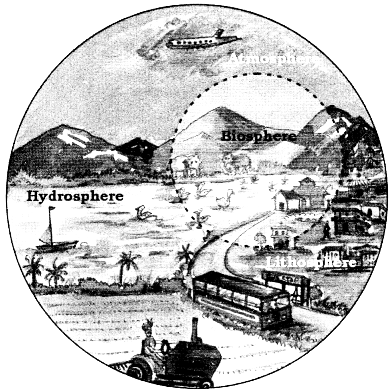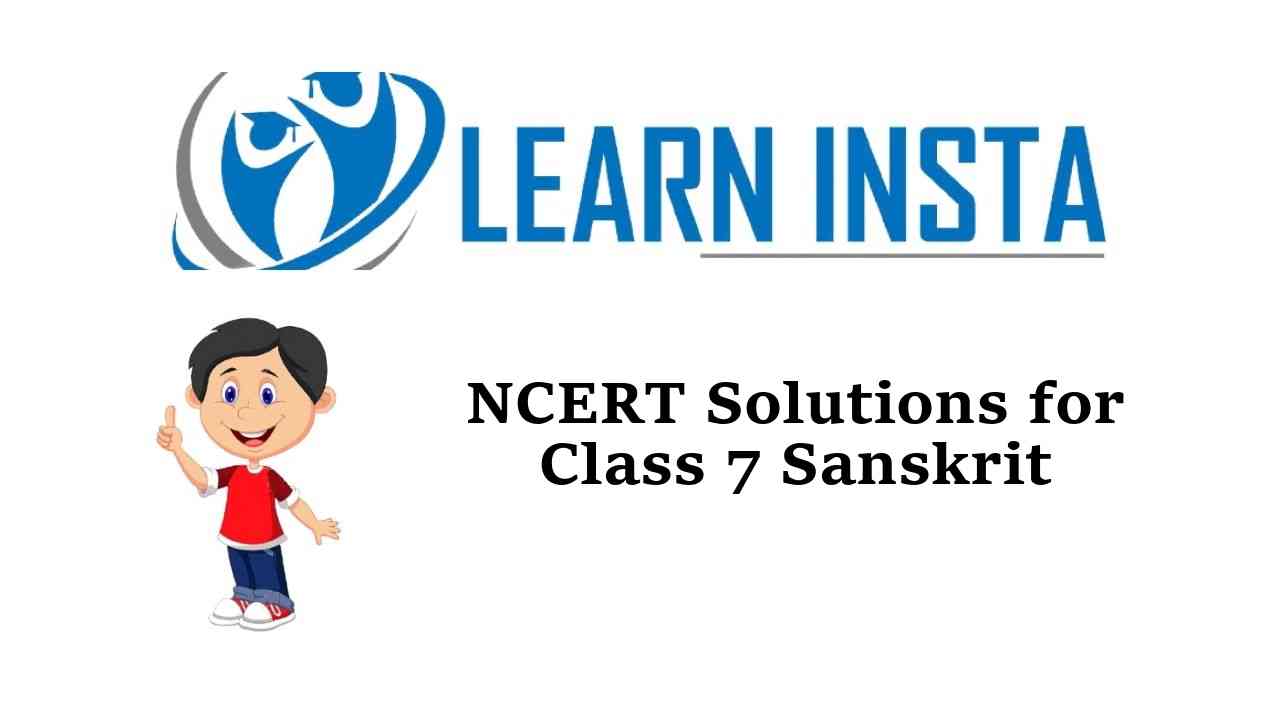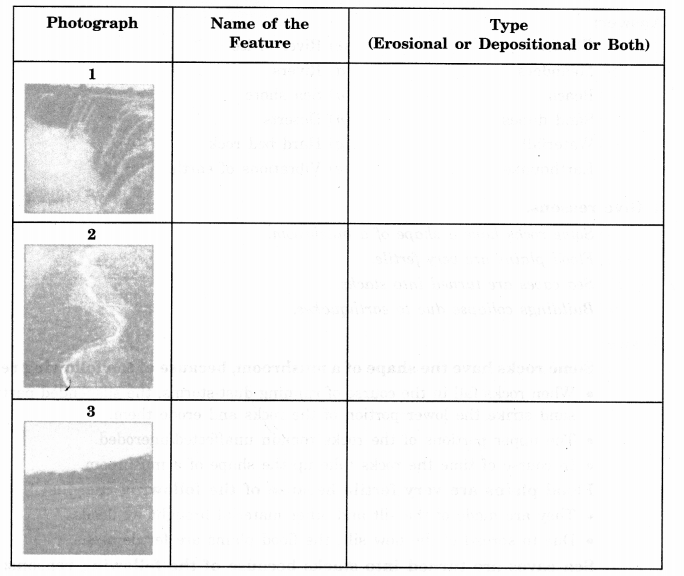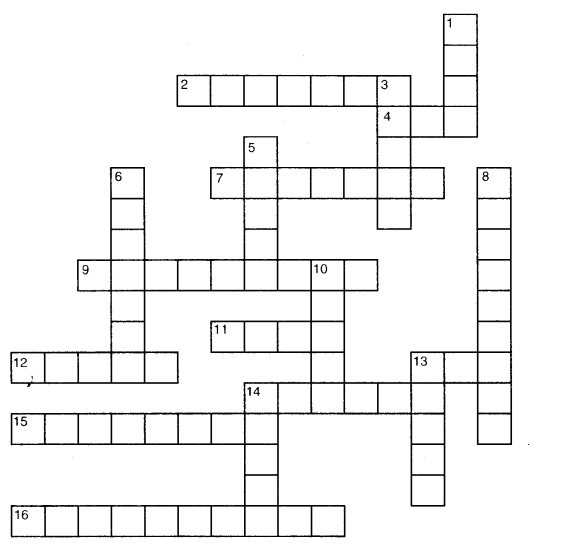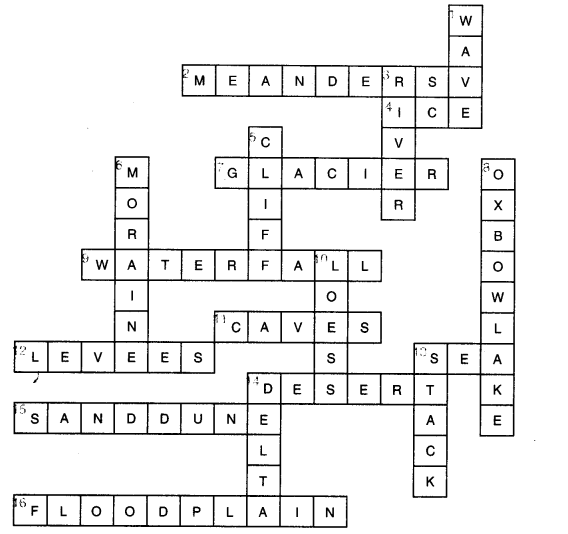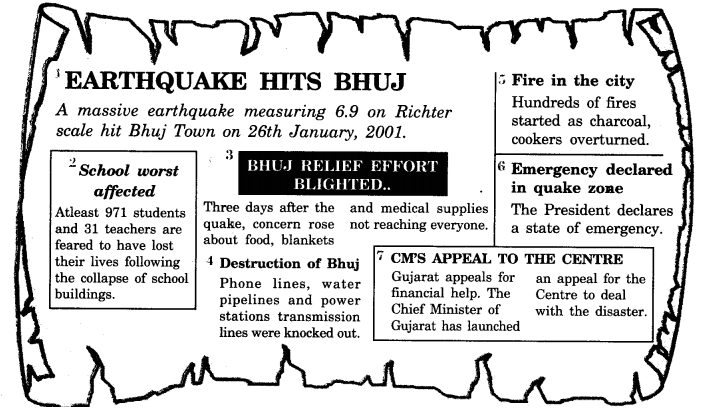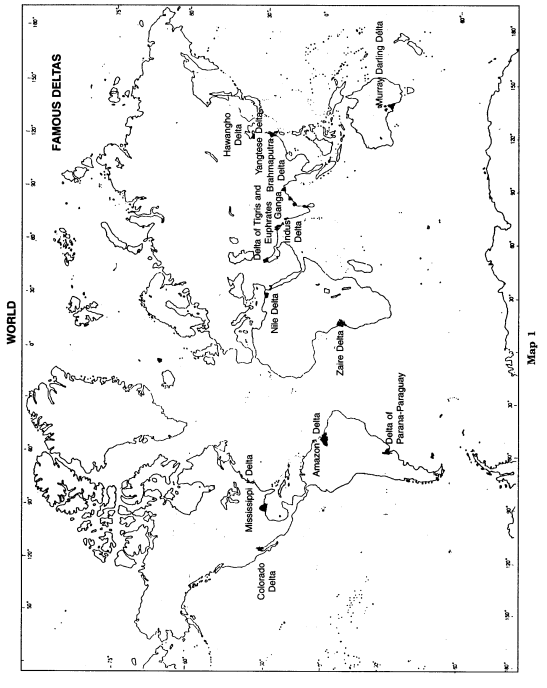Environment Class 7 Geography Chapter 1 Extra Questions and Answers Social Science CBSE Pdf free download are part of Extra Questions for Class 7 Social Science. Here we have given NCERT Extra Questions for Class 7 Social Science SST Geography Chapter 1 Environment.
You can also practice NCERT Solutions for Class 7 Geography Chapter 1 Questions and Answers on LearnInsta.com.
Class 7 Geography Chapter 1 Extra Questions and Answers Environment
Environment Class 7 Extra Questions and Answer Geography Chapter 1 Very Short Answers Type
Question 1.
What is natural environment comprised of?
Answer:
The natural environment comprises of land, water, air, plants and animals.
Question 2.
What is Hydrosphere?
Answer:
Hydrosphere is domain of water. It comprises various sources of water such as rivers, lakes, seas, oceans, etc. It is essential for all living organisms.
Question 3.
What holds the gravitational force of earth.
Answer:
The atmosphere holds the gravitational force of earth.
Question 4.
When is the World’s Environment Day celebrated?
Answer:
The World’s Environment Day is celebrated on 5 June every year.
Question 5.
How is atmosphere useful for us?
Answer:
The atmospheric layer is very useful for us. It protects us from the harmful sun rays called ultraviolet rays and scorching heat of the sun.
Question 6.
What is an ecosystem?
Answer:
Ecosystem is a system formed by the interaction of all living organisms with each other and with the physical and chemical factors of the environment in which they live, all linked by transfer of energy and material.
Question 7.
What is meant by environment?
Answer:
The place, people, things and nature that surround any living organism is called environment.
Question 8.
How is environment made?
Answer:
It is a combination of natural and human made phenomena.
Question 9.
What is natural environment?
Answer:
Land, water, air, plants and animals comprise the natural environment.
Question 10.
What is lithosphere?
Answer:
Lithosphere is the solid crust or the hard top layer of the earth.
Question 11.
How is lithosphere made up of?
Answer:
It is made up of rocks and minerals and covered by a thin layer of soil.
Question 12.
Where are landforms found?
Answer:
Landforms are found over the continents and also on the ocean floor.
Question 13.
Name the domain that provides us forests, grasslands for grazing, land for agriculture and human settlements.
Answer:
Lithosphere.
Question 14.
Define biosphere.
Answer:
Plants and animal kingdom together make biosphere or the living world. It is a narrow zone of the earth where land, water and air interact with each other to support life.
Question 15.
What forms an ecosystem?
Answer:
The relation between the living organisms, as well as the relation between the organisms and their surroundings form an ecosystem.
Question 16.
What comes under the natural component of environment?
Answer:
Land (lithosphere), air (atmosphere), water (hydrosphere) and living things (biosphere).
Question 17.
What comes under the human made component of environment?
Answer:
Buildings, parks, bridges, roads, industries and monuments.
Question 18.
What comes under human component of environment?
Answer:
Individual, family, community, religion, educational, economic and political situation.
Question 19.
Why is environment changing?
Answer:
Environment is changing because of our needs. They are increasing day by day; we are therefore modifying and at times even destroying our natural surroundings.
Question 20.
What is hydrosphere?
Answer:
The domain of water is referred to as hydrosphere.
Question 21.
What is atmosphere?
Answer:
Thin layer of air that surrounds the earth.
Question 22.
What holds the atmosphere around earth?
Answer:
The gravitational force of the earth holds the atmosphere around it.
Question 23.
What causes changes in the weather and climate?
Answer:
The changes in the atmosphere produce changes in the weather and climate.
Question 24.
What makes biosphere?
Answer:
Plants and animal kingdom together make biosphere.
Question 25.
What is barter system?
Answer:
It is a trade in which goods are exchange without the use of money.
Question 26.
What enables the large scale production?
Answer:
Industrial revolution enabled large scale production.
Question 27.
What made communication easier and speedy across the world?
Answer:
Information revolution made communication easier and speedy across the world.
Question 28.
How does human being use the environment?
Answer:
Human beings use environment to fulfil their needs. The needs of human are increasing day by day. They are dependent on environment. They fulfilled their needs/requirements from the nature around them.
Question 29.
Who invited Ravi to visit his/her hometown in Mizoram during the upcoming summer vacation?
Answer:
Nurie, a girl from Ravi’s class.
Question 30.
What is biotic?
Answer:
The world of living organisms e.g. plants and animals are called biotic.
Question 31.
What is abiotic?
Answer:
The world of non-living elements, e.g. land.
Question 32.
What are components of environment?
Answer:
There are three components of environment-natural, human-made and human.
Question 33.
Name one thing that comes under natural component of environment.
Answer:
Air (atmosphere).
Question 34.
Name one thing that comes under human-made component of environment.
Answer:
Industries.
Question 35.
Name two things that comes under human component of environment.
Answer:
Religion and economy.
Question 36.
What is a source of mineral wealth?
Answer:
Lithosphere.
Environment Class 7 Extra Questions and Answer Geography Chapter 1 Short Answers Type
Question 1.
What is gravitational force?
Answer:
The gravitational force holds the atmosphere around the earth. It protects us from the harmful rays and scorching heat of the sun. It consist of a number of gases, dust and water vapour.
Question 2.
What do you understand by the term ‘Lithosphere*? Describe in brief.
Answer:
Lithosphere is the solid crust or the hard top layer of the earth. It is made up of rocks and minerals and covered by a thin layer of soil. Lithosphere is an irregular surface with various landforms such as mountains, plateaus, plains, valleys, etc. Lithosphere is the domain that provides us forests, grasslands, agricultural land and human settlements. It is also a source of mineral wealth.
Question 3.
What do you mean by the atmosphere? Describe in brief.
Answer:
The atmosphere is the thin layer of air that surrounds the earth. The gravitational force of the earth holds the atmosphere around it. It protects us from the harmful rays and scorching heat of the sun. It consists of a number of gases, dust and water vapour. The changes in the atmosphere produce changes in the weather and climate.
Question 4.
What do you understand about Barter System?
Answer:
It is a trade in which goods are exchanged without the use of money. In this system, the goods are exchanged with the goods or you can say that goods are exchanged between the two needy people.
Question 5.
Why was the environment quite well during the early period?
Answer:
There were very limited needs of early men. There were no industries, transport or other means which could produce harmful gases. The early man did not have the use of chemical products such as pesticides and fertilizers etc. The quantum of garbage was very limited. All these things affect the environment and thus in the early period our environment was quite well.
Question 6.
Describe the various causes which affect our environment.
Answer:
Human activities on earth affect whole environment. The causes which affect our environment can be listed as follows:
(i) Industries and means of transports which release smoke;
(ii) Use of fertilizers and pesticides;
(iii) Un-cleaned surrounding;
(iv) Polluted water and air;
(v) Unsettled domestic as well as electronic garbage etc.
Question 7.
What do you understand about hydrosphere?
Answer:
The domain of water is referred to as hydrosphere. It comprises various sources of water and different type of water bodies like rivers, lakes, seas, oceans, etc., which are essential for all living organisms.
Environment Class 7 Extra Questions and Answer Geography Chapter 1 Long Answers Type
Question 1.
Describe briefly about environment.
Environment is our basic life support system. It provides the air we breathe, the water we drink, the food we eat and the land where we live. The place, people, things and nature that surround any living organism is called the environment.
It is a combination of natural and human-made phenomena. While the natural environment refers to both biotic and abiotic conditions existing on earth, human environment reveals the activities, creations and interactions among human being. There are three components of environment:- Natural, Human-made and Human.
Question 2.
Describe about Lithosphere.
Answer:
Lithosphere is the solid crust or the hard top layer of the earth. It is made up of rocks and minerals and covered by a thin layer of soil. It is an irregular surface with various landforms such as mountains, plateaus, plains, valleys, etc. Landforms are found over the continents and also on the ocean floors. Lithosphere is the domain that provides us forests, grasslands for grazing, land for agriculture and human settlements. It is also a source of mineral wealth.
Question 3.
How does human being use environment to fulfil their needs?
Answer:
Human beings interact with the environment and modify it according to their needs. Early humans adapted themselves to the natural surroundings. They led a simple life and fulfilled their requirements from the nature around them. Human learnt new ways to use and change environment as times and need grew and became more varied.
They learnt to grow crops, domesticate animals and lead a settled life. The wheel was invented, surplus food was produced, barter system emerged, trade started and commerce developed. Industrial revolution enabled large scale production. Transportation became faster. Information revolution made communication easier and speedy across the world.
Question 4.
How can the environment impact living beings?
Or
What impact does the environment can have on us?
Answer:
All the living beings are directly associated with environment. If the environment is good, the living beings will be healthy. If the environment is polluted the living beings will be ill or unhealthy. In an unhealthy environment, many types of diseases can turn up in the human beings. These diseases may be as respiratory, abdominal, eye-related and some may be as chronic. Likewise, in the plants also grow many diseases due to the unhealthy environment. And hence, the photosynthesis process in the plants becomes slow which results in restricting the growth and functioning of plants.
Picture Based Questions Class 7 Geography Chapter 1 Environment
Question 1.
Draw a sketch of component of environment.
Answer:
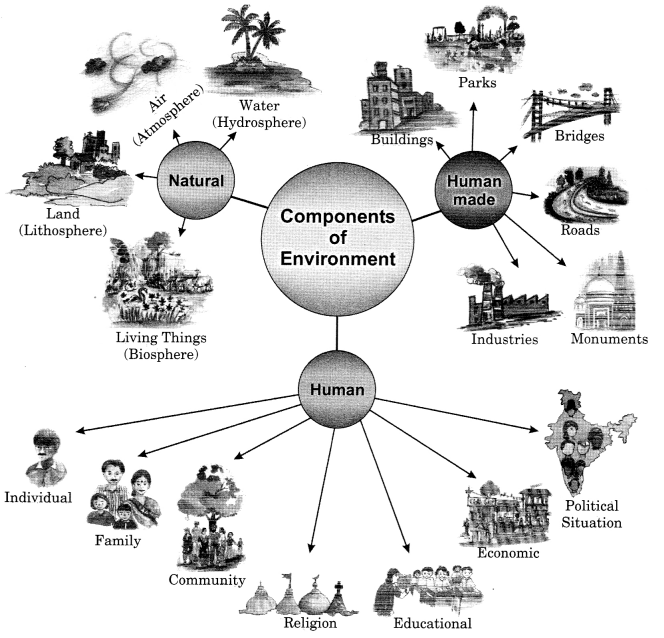
Question 2.
Draw a picture stating domains of the Environment.
Answer:
